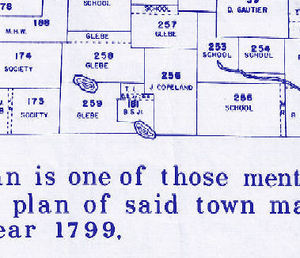With warmer weather arriving across the country, many picnics and barbecues will be accompanied by one of the nation’s oldest backyard traditions – croquet.
When the neighbors come over with a dusted-off old croquet set, there are a few official rules of the game that can be incorporated into backyard play to enhance the experience without killing the relaxed spirit of the game.
Hard-core croquet players following the strictest of guidelines by professional standards may cringe when considering the disregard for rules many amateur players embrace. Though it isn’t necessary to fully comply with the smallest rulebook details, adding a few rules can take the game to a new level of strategy and competition.
Rule 1: Setting boundaries
Boundaries in backyard croquet?
Though many players may take great joy in croqueting their younger sibling’s ball deep into the forest or inconveniently into a nearby shrub, having boundaries is the most important upgrade when trying to establish a set of house rules for the croquet field.
Having boundaries may seem restrictive to the average backyard player, but it actually opens up new strategies and helps players more effectively develop their croquet skills. Boundaries are one aspect of the game that is a major differentiation between the complete novice and those who take the game more seriously.
When setting them up, the first thing to do is establish what size the croquet field will be. The standard for nine-wicket American-style croquet is 100 feet by 50 feet, though the dimensions can change based on how much room there is for play. The actual size isn’t that important, as long as the boundaries are clearly defined. If playing at home, the lawnmower can make a quick boundary by being dropped down a level to cut the grass a little lower around the edge of the playing area.
For those who take their game to a park or other community field, a small neon rope rolled up on a carrier designed for extension cords works great. Use one color for the long sides and another for the short sides. As the boundary unwinds it will be easier to determine when to turn the corner. Tie the rope, or twine, together at the corners with short eye screws, which can be used to anchor the boundary to the ground. It is also a good idea to attach a few more eye screws around the edge to better anchor the line.
Once the boundaries are established, rules have to be set for what happens when a ball goes out, either by being sent out from another player, or by being over-hit. One variation is to have the ball merely placed back in bounds a mallet-head length at the point the ball left the paying field. That rule can be very helpful if another player’s ball is sitting close to the edge and the person shooting is looking at two shots. The first shot can sail out of bounds near the other player’s ball, and then be placed back in bounds in close proximity for an easy second shot.
Another variation would be to make a player’s turn end when either the player’s ball goes out, or another player’s ball is sent out. The turn-ending rule changes the strategy, allowing players without many options to hit near the boundary in hopes the other players will avoid them for fear of hitting one of the balls out of bounds, thereby ending the turn.
Rule 2: Team play
Croquet is not designed to be a solo sport. It is designed to be played in two teams of either two or three players. As a backyard variation, the game can also be played in three teams of two players. The teams alternate turns, so in a four-player game, colors blue and black play against colors red and yellow. In a six-player game the teams consist of blue, black and green against red, yellow and orange. With three teams playing, the teams become blue-yellow, red-green and black-orange.
With the casual atmosphere of backyard croquet, teams can be allowed to discuss options during game-play, which can keep players engaged during the long breaks between turns. It also allows the game to be more evenly matched by pairing stronger players with those who are weaker or have less experience.
In order for the game to be won, both players must reach the final stake, so working together is important.
Rule 3: Rover
Even with teammates playing together, often one member may reach the end significantly ahead of the player’s partner. After players pass the last wicket they become rovers, which can move about on the field to help their partners. As long as a rover does not hit the stake, the player remains active. Rovers gain an extra stroke every time they pass through a wicket in either direction. If they hit another players ball, they become dead on that ball until they pass through any wicket and hit a different ball. As each turn begins, all the other balls in the game once again become alive to the rover.
When two teams have a rover, one player may attempt to put another player out of the game by sending that person’s ball into the final stake. Only a rover can stake out another rover. Although that strategy will cause the other team to accomplish a major objective of one member completing the course, it also abandons any hope of help for that player’s teammate and creates a situation where team members take consecutive turns. Being put out of the game early is a big disadvantage – so much so that in many occasions a rover will remain in the game until every member of the team is in a position to hit the final stake together.
Final note:
Backyard croquet is a casual and relaxed way to spend a summer afternoon. The official Croquet Association rulebook includes many guidelines for the game, which over time can be implemented by players wanting to advance the quality of the sport. Ultimately, whatever rules are established can help create a more fun atmosphere and make the game more enjoyable for those who participate.


